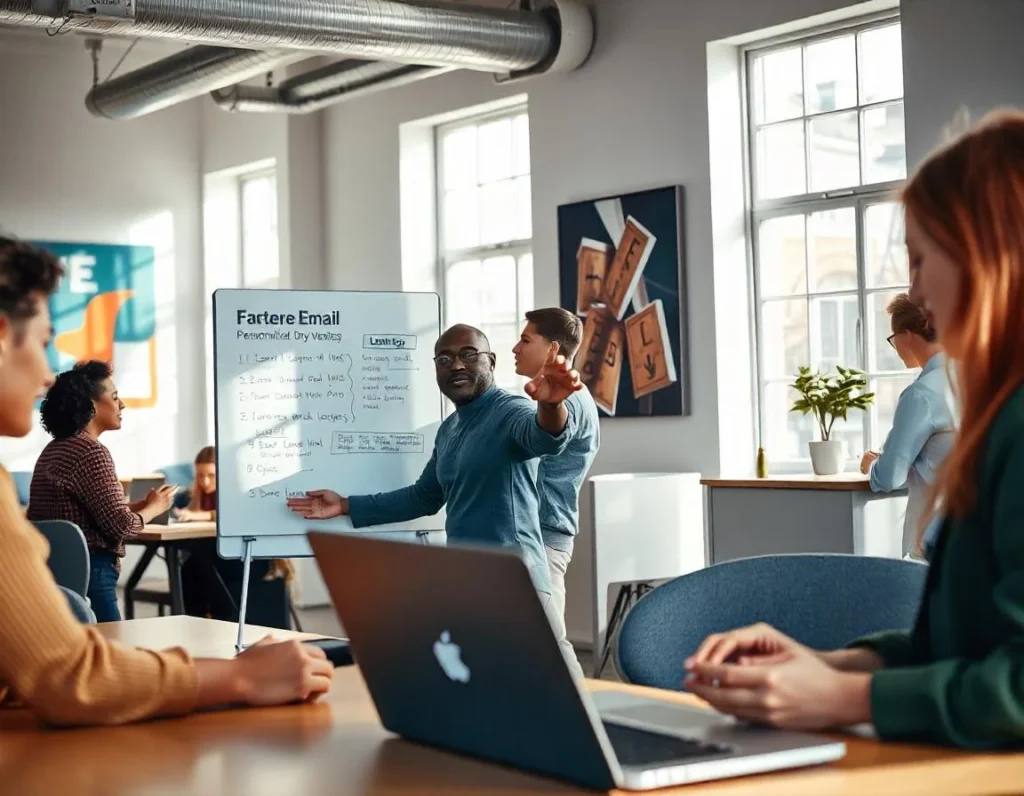Today, consumers are bombarded with generic messages in the digital world. Personalized email campaigns help businesses cut through the noise to truly connect with their audience. And what’s the magic behind making this happen on a large scale? Marketing automation.
The following article will walk you through customizing email campaigns with marketing automation and will show you how to get the right message in front of the right person at the right time.
Why Personalized Email Campaigns Matter
Personalization within email marketing involves much more than simply using the recipient’s name to address them. It’s personalizing the content, offers, and recommendations to the taste and preference of every individual, behaviors, and demographics. This kind of personalization ensures:
- Higher Engagement Rates: Recipients are most likely to open an email or at least click through, pertaining to something relevant to their interests.
- Improved Customer Relationships: Personalized communications show your customers that they are important, heard, and understood; hence, this improves the relationship between them and your brand.
- Higher conversion rates: You will be able to ascertain that whenever offers and recommendations targeted reach a recipient, they serve to bring him nearer to performing an action, such as purchasing or signing up.
- Improved ROI: Personalized email campaigns are more effective than general email blasts.
The Role of Marketing Automation in Personalized Email Campaigns
Marketing automation is basically the engine behind sending personalized email campaigns. It involves the employment of software to carry out some routine tasks. For example:
- Market segmentation: This refers to the division of your email lists into separate groups with similar characteristics.
- Behavioral Triggered Emails: These are emails automatically sent after certain types of actions, like visiting a website or finishing a purchase.
- Personalization of e-mail content: dynamic insertion of content, for example, recommended products or personalized offers, according to the record.
- Campaign performance analysis: Monitoring the most important metrics will enable the measurement of campaign effectiveness and allow data-driven adjustments.

Steps to Create Personalized Email Campaigns with Marketing Automation
1. Define Your Audience and Gather Data
The basis for any successful customized email campaign is a rich understanding of your audience. First, accrue data about your subscribers:
- Demographics: age, sex, location, etc.
- Interests: what products or services they have shown interest in.
- Purchase history: previous buys and spending habits.
- Website activity: page views, time on site, etc.
- Email engagement: open rates, click-through rates, etc.
This may be accrued by various means, including:
- Signup forms: Capture data during the sign-up process.
- Web tracking: Use cookies and analytics to track what’s happening on your website.
- Online surveys and polls: Keep your people involved in your brand and bring in valued input.
- CRM: Integrate your email marketing platform with your CRM and get hold of customer data.
2. Segment Your Audience for Targeted Messaging
Segment the data when you have enough, into distinct groups using similar characteristics. You will then be able to reposition your email content to better suit specific needs and interests. This may be achieved by segmenting your audience based on:
- Demographics: Sending age-related messages to particular age brackets.
- Purchase history: When a customer buys something on frequent intervals, send them special offers.
- Interests: Based on browsing behavior, offer relevant products or content.
- Engagement level: In cases of subscribers being inactive, send out personalized re-activation campaigns.
3. Utilize Behavioral Triggers to Deliver Timely Emails
Behavioral triggers are emails that get triggered automatically on account of an action taken by your subscribers. This enables one to deliver timely, contextual messages when the subscribers are most engaged.
Common behavioral triggers include welcome emails, teaching new subscribers what to expect from them, and abandoned cart emails, reminding shoppers about the items they left in a cart and nudging them to complete their purchase.
It sends out emails after purchase to thank customers for their purchase and related products or services. Sends birthday emails on subscriber birthdays, personalizing greetings and special offers inside. Used to reactivate emails for inactive subscribers by targeting them with certain content or an incentive.
4. Craft Compelling and Personalized Email Content
The content of the email will really drive either engagement or conversion. Following are a few tips for crafting the email that will help create an engaging and converting one:
- Use a conversational tone: Write like you’re talking directly with the recipient.
- Highlight the value proposition: Clearly communicate the benefits of your products or services. Include a clear call to action: Tell recipients what you want them to do next.
- Personalization tokens: These can automatically fill in information specific to the recipient, such as their name or location, in emails.
- A/B Test Emails: It allows testing several options of a subject line, content, and calls to action to find out what works best.
5. Leverage Dynamic Content for Enhanced Personalization
It really takes personalization to the next level, where the content of your emails automatically changes depending on each person’s data. This enables you to create truly unique experiences with each recipient.
Some of the ways in which you could make good use of dynamic content are by:
- Personalized product recommendations: Recommend items based on browsing history or past purchases.
- Personalized offers: Give personalized promotions based on preference or demographics of the individual.
- Location-based content: Depending on where the contact opened the mail, show something relevant.
- Personalize the images and visuals: “Images that mean something to the recipient are best.
6. Monitor and Analyze Your Campaign Performance
Since the key may be different in various e-mail marketing campaigns, the tracking and analysis of keys will make sure that your personalized campaigns are running right. It will provide insight into where you need to make improvements and create better optimization for your campaigns.
Following is some important metrics to track:
- Open rates: This is the percentage of recipients opening your emails.
- Click-through rates: This is the percent of recipients clicking on links contained within your emails.
- Conversion rates: the percent of recipients who take the desired action, such as making a purchase.
- Unsubscribe rates: the percent of recipients who opt-out of your email list.
By tracking these metrics you’ll be able to notice trends and potential problems, and make changes based on your findings.
Best Practices for Personalized Email Campaigns
So, to make sure that your personalized email campaigns are well-carried out, explicit consent should always be gotten from subscribers before marketing emails are sent. Take good care of their data; keep it secure, and you have to abide by all applicable privacy legislation.
In other words, personalization should be simple to start and then build in complexity as you go. You don’t want to hit them over the head with a lot of personalization right off the bat. Make sure all of your emails have a consistent brand voice-a feeling and a sound that they are actually coming from your brand.
Next, optimization for such devices while sending emails is paramount in this mobile-first world. And lastly, remember the power of testing and optimization on a continuous basis. Regularly analyze your campaign results and make any necessary adjustments to improve performance.
Need All-In-One Marketing Solution?
Conclusion
With marketing automation, personalization of e-mail campaigns is one of the most powerful means to engage your audience, nurture much better relationships, and drive conversions. You will be able to deliver truly relevant and engaging email experiences using the tools and techniques highlighted in this article; experiences that actually resonate with your subscribers and drive your marketing objectives.
If you are in need of a partner to help you with marketing automation, then search no more. Contact My Business Integrated for a custom marketing automation solution.




